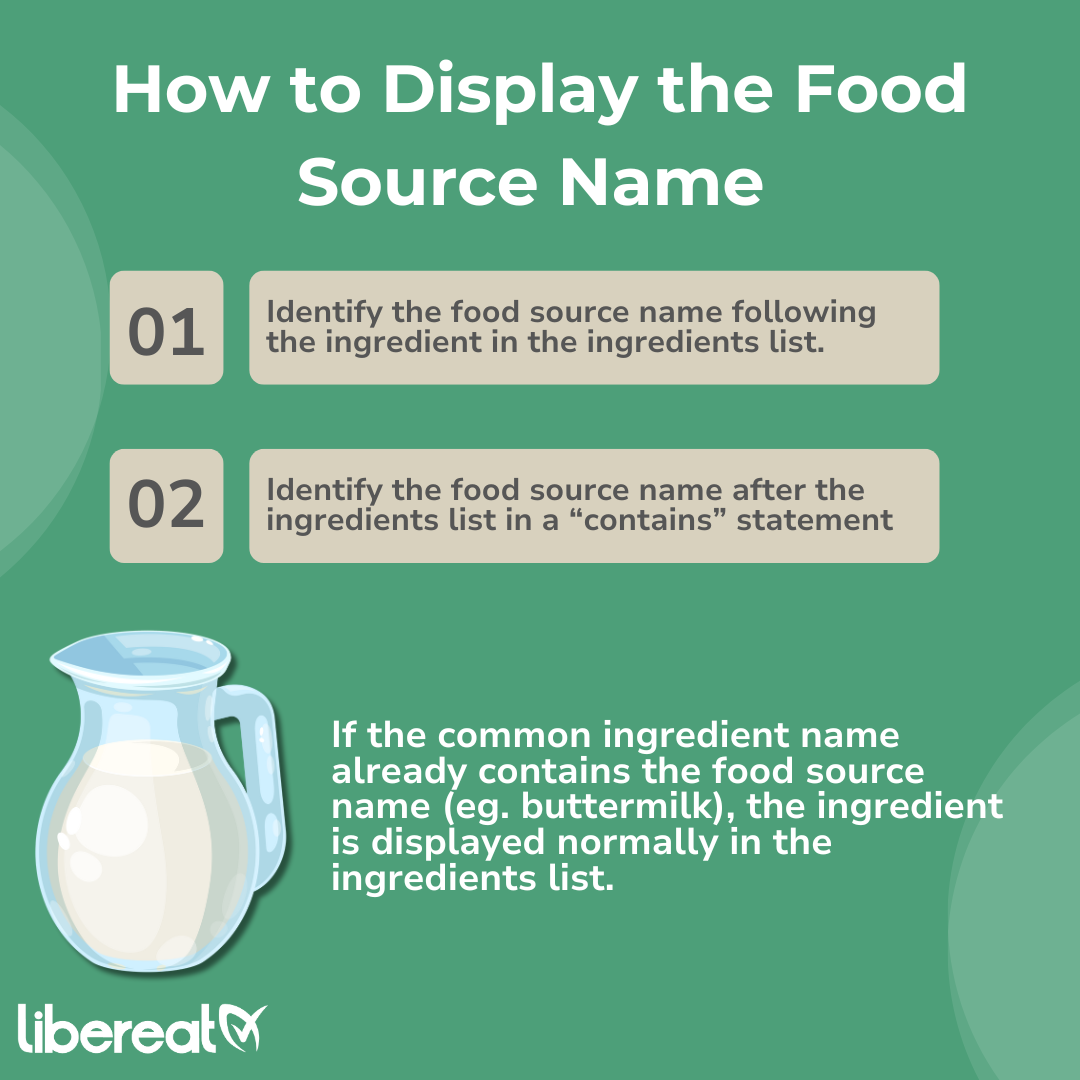Tree nut allergies are among the most common food allergies in both adults and children. According to the American College of Allergy, Asthma and Immunology (ACAAI), one reason for their prevalence is that the allergy tends to be lifelong, with the organization stating that less than 10% outgrow it. Tree nut allergies affect approximately 0.5-1% of the U.S. population, according to FARE and the CDC.
As a result, the allergen is one of the nine major food allergens identified by the FDA. This means that food manufacturers and retailers are legally required to follow food safety legislation, ensure that food allergen labels provide accurate information for consumers, and display them correctly on food packaging. In this article, we’ll discuss the unique characteristics of tree nut allergies, relevant laws regarding food safety, and the consequences of incorrect allergen labeling.
What is a Tree Nut Allergy?

Please Note: LiberEat’s content is not intended to be a substitute for professional medical advice. You should always take precautions and use appropriate judgment concerning food allergies to protect yourself and others under your care.
A tree nut allergy occurs when the body’s immune system mistakenly identifies proteins from tree nuts as harmful foreign substances known as antigens. In response, the immune system releases a protein known as Immunoglobulin E to protect itself from the antigen, which is known as an antibody.
As part of this process, the body will release a chemical called histamine, which causes many of the typical allergy symptoms, such as:
- Feeling dizzy or lightheaded.
- Diarrhea or vomiting
- Itchy skin or hives
- Coughing, wheezing, and difficulty breathing
- Stomach pain
In serious cases, anaphylaxis may occur, which is a potentially fatal allergic reaction due to the constriction of airways, resulting in severe breathing difficulties. If someone is going into anaphylactic shock, the Mayo Clinic states the following should be carried out:
- Call 911 or your local emergency number.
- If they have one, ask if they need help to administer an epinephrine autoinjector. This is normally injected into the thigh, though the FDA has recently approved EpiPen nasal sprays.
- Ensure they are lying face up and still. If vomiting or bleeding from the mouth occurs, they must lie on their side to prevent choking.
- Cover the person with a blanket and loosen tight clothing
- Apply CPR until paramedics arrive If there are no signs of breathing, coughing, or movement. Aim for 100 chest presses per minute.
There is no way to predict the severity of an allergic reaction, so undeclared allergens and incorrect allergen information, if unnoticed, can result in fatalities. With food allergies on the rise globally, the stakes for food businesses are higher than ever.
Are peanuts tree nuts? Can you be allergic to tree nuts and not peanuts?

While peanuts and tree nuts may appear similar at first glance, peanuts are considered legumes, meaning that tree nuts are grown in trees and peanuts are grown underground. Many people with a tree nut allergy are also likely to be allergic to peanuts due to protein similarities that trigger the same immune system response. Food Allergy Research and Education states that 40% of children with a tree nut allergy are also allergic to peanuts, with other organizations stating a similar number.
It’s recommended to speak with an allergist for specific dietary advice. We also have an article that further details the differences between peanuts and tree nuts.
What is a major food allergen, according to the FDA?
In the U.S., the Food Allergen Labeling and Consumer Protection Act (FALCPA) was introduced in 2004, identifying eight foods as the primary causes of allergic reactions in the country. A ninth food allergen, sesame, was added on January 1, 2023, through the Food Allergy Safety, Treatment, Education, and Research (FASTER) Act.
Since then, they have collectively been known as the “big nine allergens”:
Under the FASTER Act labeling requirements, retail and food-service establishments are legally required to declare sesame if present in packaged food or dietary supplements. The allergen information must provide the food source name of the major allergen, which can be done in two ways:
- In parentheses, following the name of the ingredient.
- After or next to the ingredients list in a “contains” statement.

Under new FDA guidance published in 2025, only the following nuts are considered tree nuts and must be labeled appropriately:
- Almonds
- Black walnuts
- Brazil nuts
- California walnuts
- Cashews
- Filbert/Hazelnuts
- Heartnut/Japanese walnuts
- Macadamia Nut/Bush nuts
- Pecans
- Pine nuts
- Pistachios
- Walnuts (English, Persian)
This means nuts that were previously considered “tree nuts” no longer adhere to food allergen labeling requirements. This includes:
- Coconuts
- Kola nuts
- Beechnuts
- Butternuts
- Chestnuts
- Chinquapins
- Ginkgo nuts
- Hickory nuts
- Palm nuts
- Pili nuts
- Sheanut/shea nuts
The Food and Drug Administration regulates the mandatory labeling of foods, as it has jurisdiction over most major allergens. However, specific meat, egg, and poultry products fall under the jurisdiction of the Food Safety and Inspection Service (FSIS), an agency of the U.S. Department of Agriculture. Food Safety professionals can find further information on how the FSIS affects food labeling requirements on its website.
Precautionary Allergen Labeling (PAL)
Some food businesses may also choose to implement a voluntary labeling measure known as precautionary allergen labeling (PAL). This is commonly used when there is a risk of the unintentional transfer of allergens between food products, known as cross-contact.
Cross-contact may occur due to shared surfaces and utensils not being properly cleaned after use, as well as poor handling and storage of allergenic foods or ingredients, for example. If there is a risk of unintentional allergens, businesses may include PAL on their food packaging by including a “may contain” statement near the ingredients list.
What is a food recall?
Failure to comply with food law will typically result in a food recall, which can have severe consequences for the affected business.
The FDA issues food recalls, typically for products that pose a health risk to consumers due to contamination or undeclared allergens. Most businesses will voluntarily undergo food recalls requested by the FDA, following the guidance issued by Code 21 CFR 7.
If a business fails to recall the product voluntarily, the FDA has the authority to issue a mandatory recall under Section 423 of the Food, Drug, and Cosmetic Act. This authority was added to the FD&C Act under Section 206 of the Food Safety Modernization Act on January 4, 2011. Recommended practices for recalls can be found here. Our dedicated recall page provides more details on some of the most common reasons for recalls.
Businesses may face many issues when undergoing a food recall. When an operation is notified of a food item recall, regulatory bodies, consumers, and relevant parties throughout the supply chain must be notified. This can be time-consuming and divert staff from other pressing responsibilities.
Similarly, staff will likely find themselves involved in increased PR activities to mitigate potential reputational damage, as food recalls are listed on both the FDA website and a dedicated FDA recall social media account with over 650,000 followers. This process can be incredibly costly.
What can businesses do to comply with FDA allergen labeling regulations?
Undeclared allergens and incorrect allergen statements can devastate businesses and cause serious consumer risks. Unfortunately, even the most vigilant food business operators may struggle to comply with allergen labeling requirements due to the error-prone nature of quality assurance (QA) methods that rely on manual checks, which are common in the food industry. LiberEat aims to help with our allergen error detection technology, which continuously monitors food data (such as ingredient lists and supplier specifications) 24/7, 365 days a year.
Find dangerous errors in your allergen data in real time and fix them before they reach a consumer
LiberEat’s technology detects errors in allergen data across supplier specifications, website and app content, food packaging, and menus. By managing and reviewing allergen data effectively, your business can better protect customers from exposure to major allergens—explore more in our allergen information hub.
LiberEat supports allergen management by detecting errors in data related to allergen labeling and ingredient lists, helping prevent costly recalls and safeguarding consumer health. Gain peace of mind and contact us to learn how LiberEat can enhance your food safety procedures.

